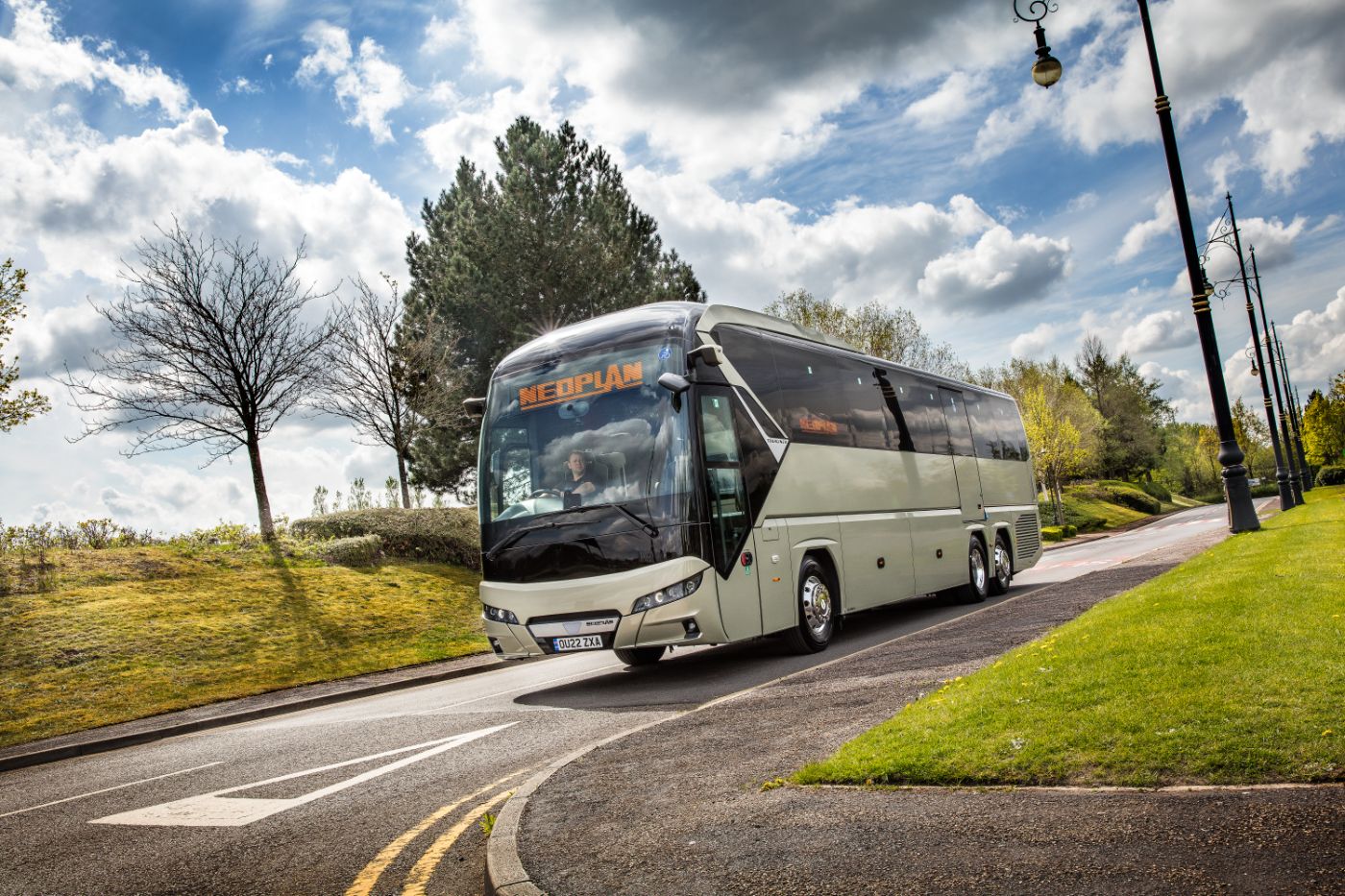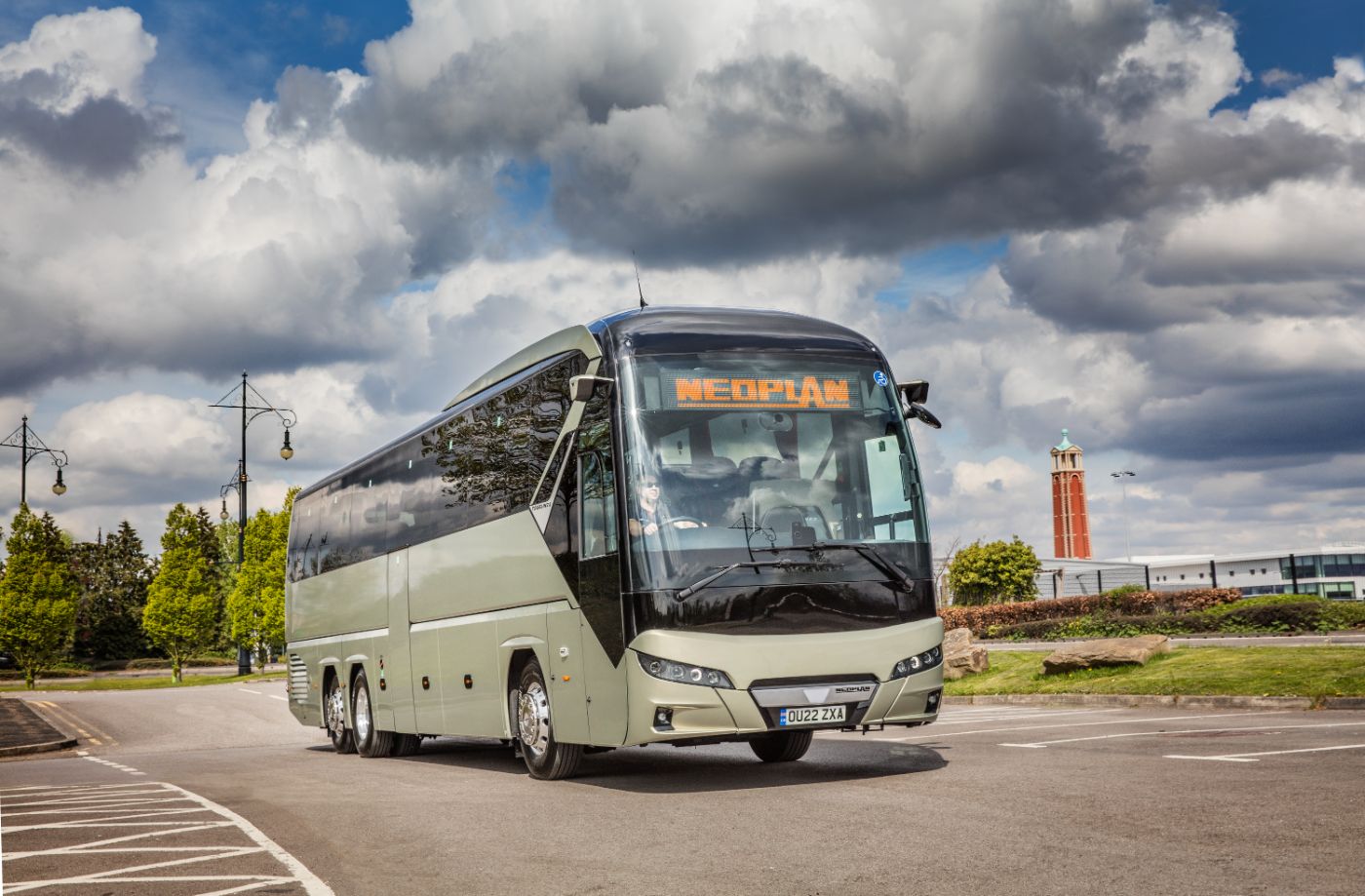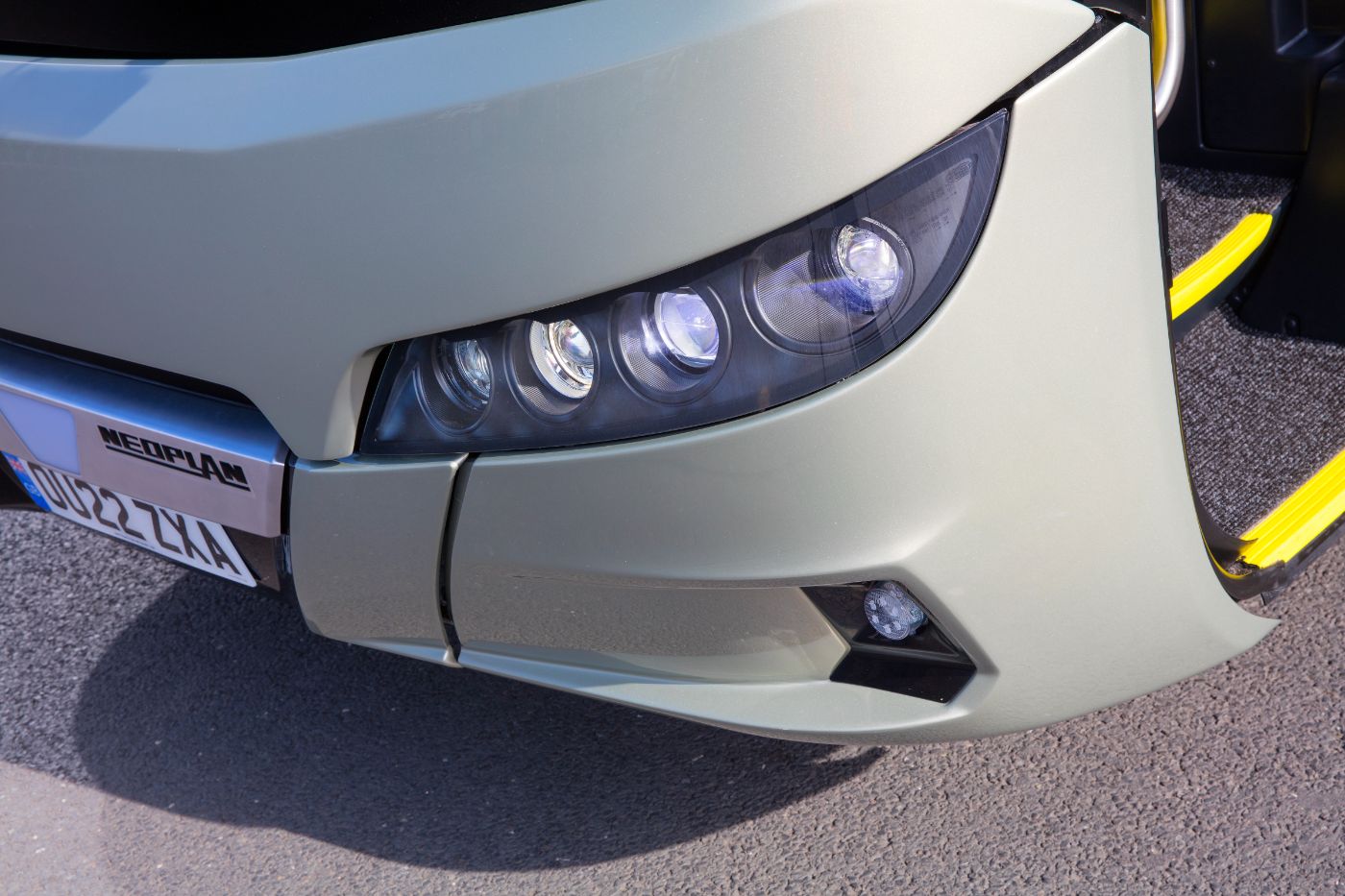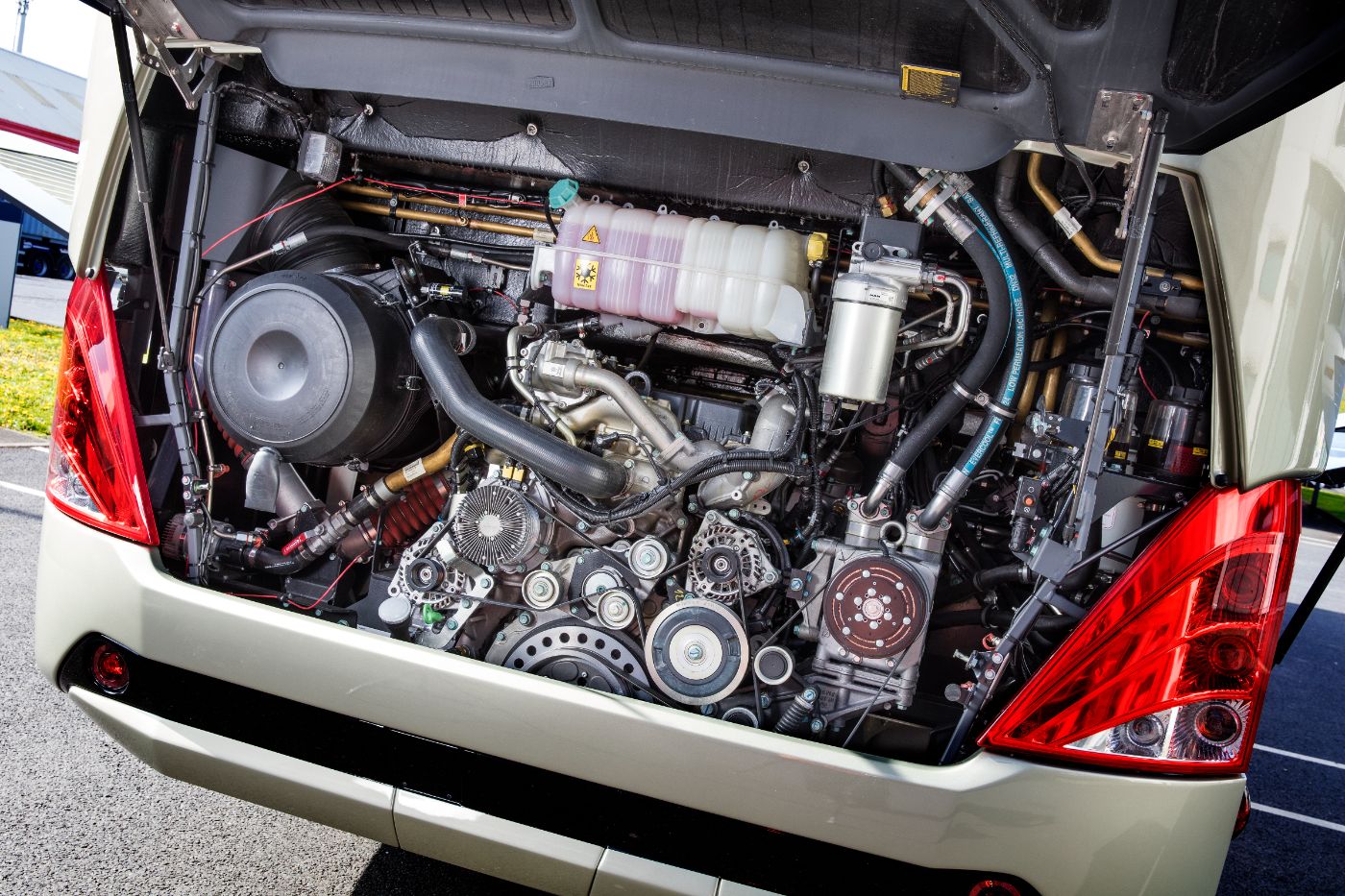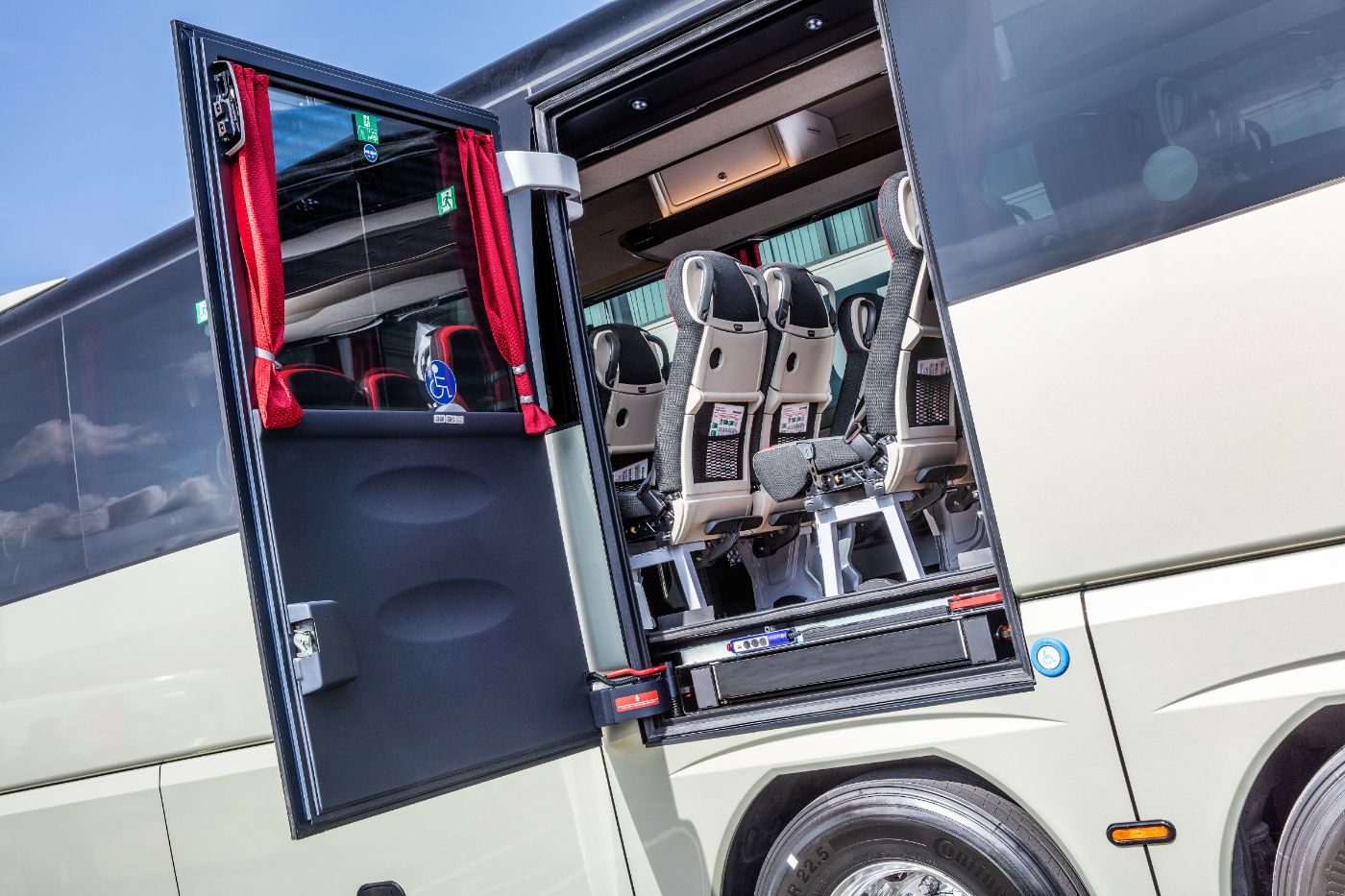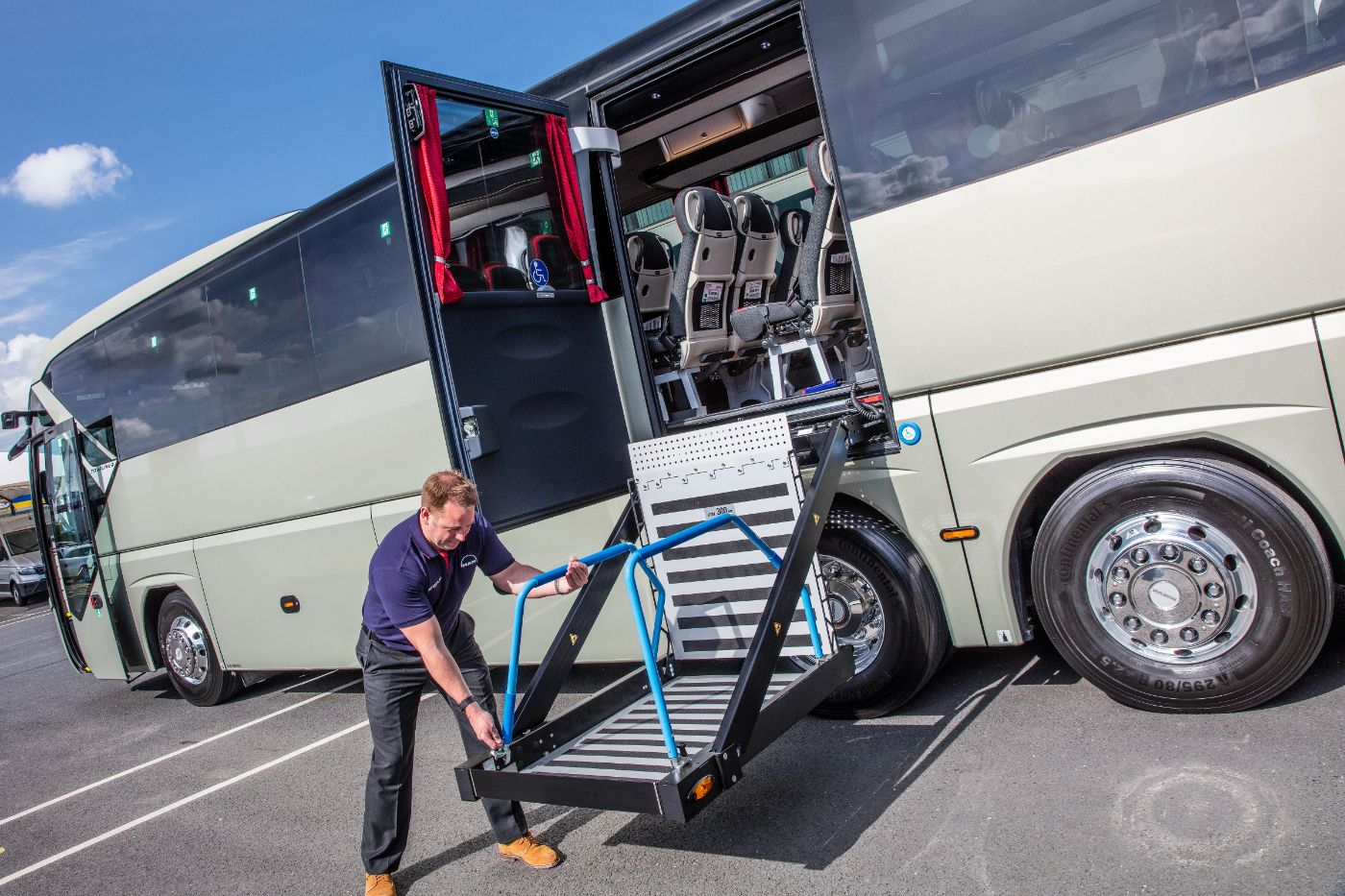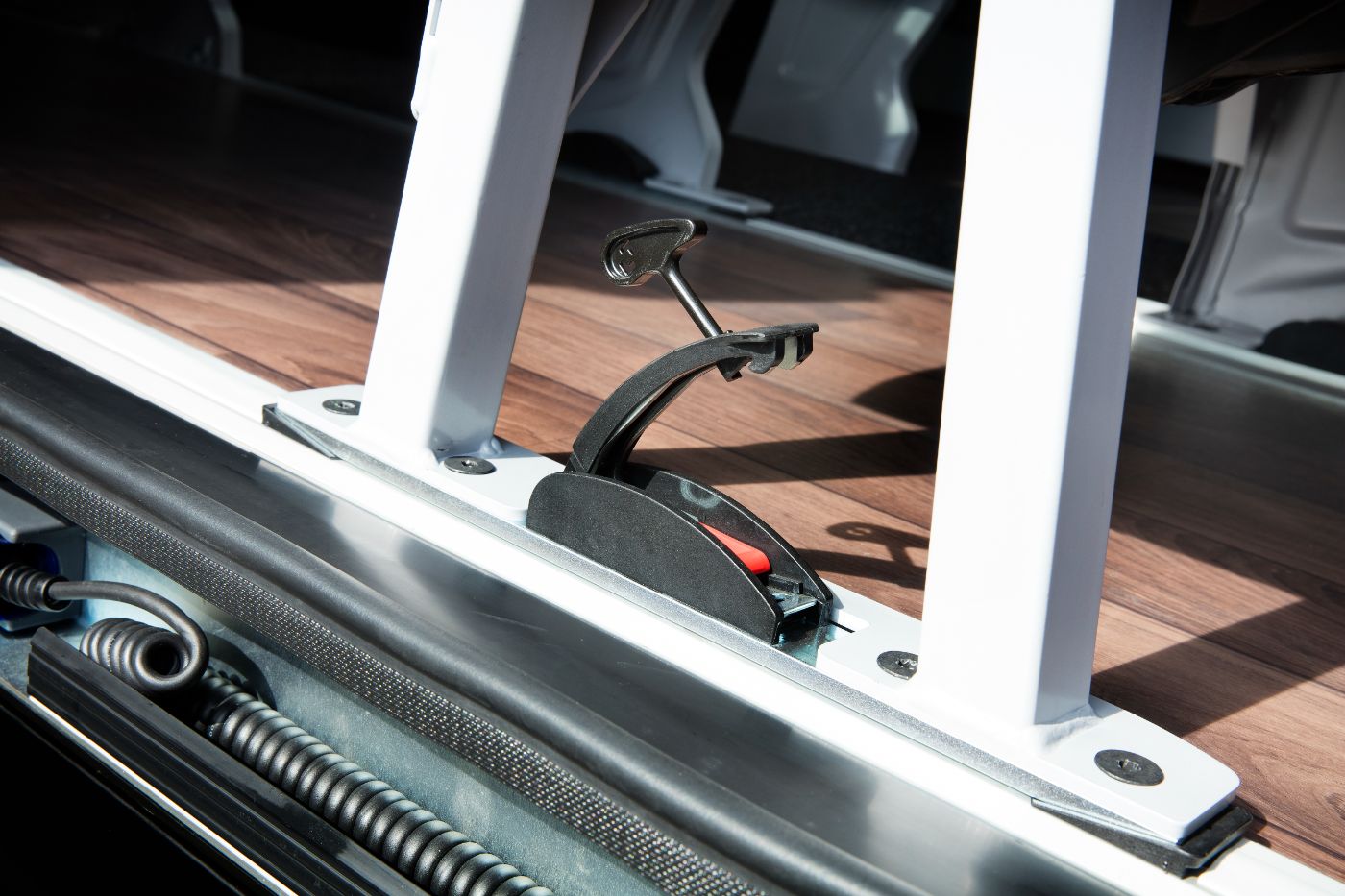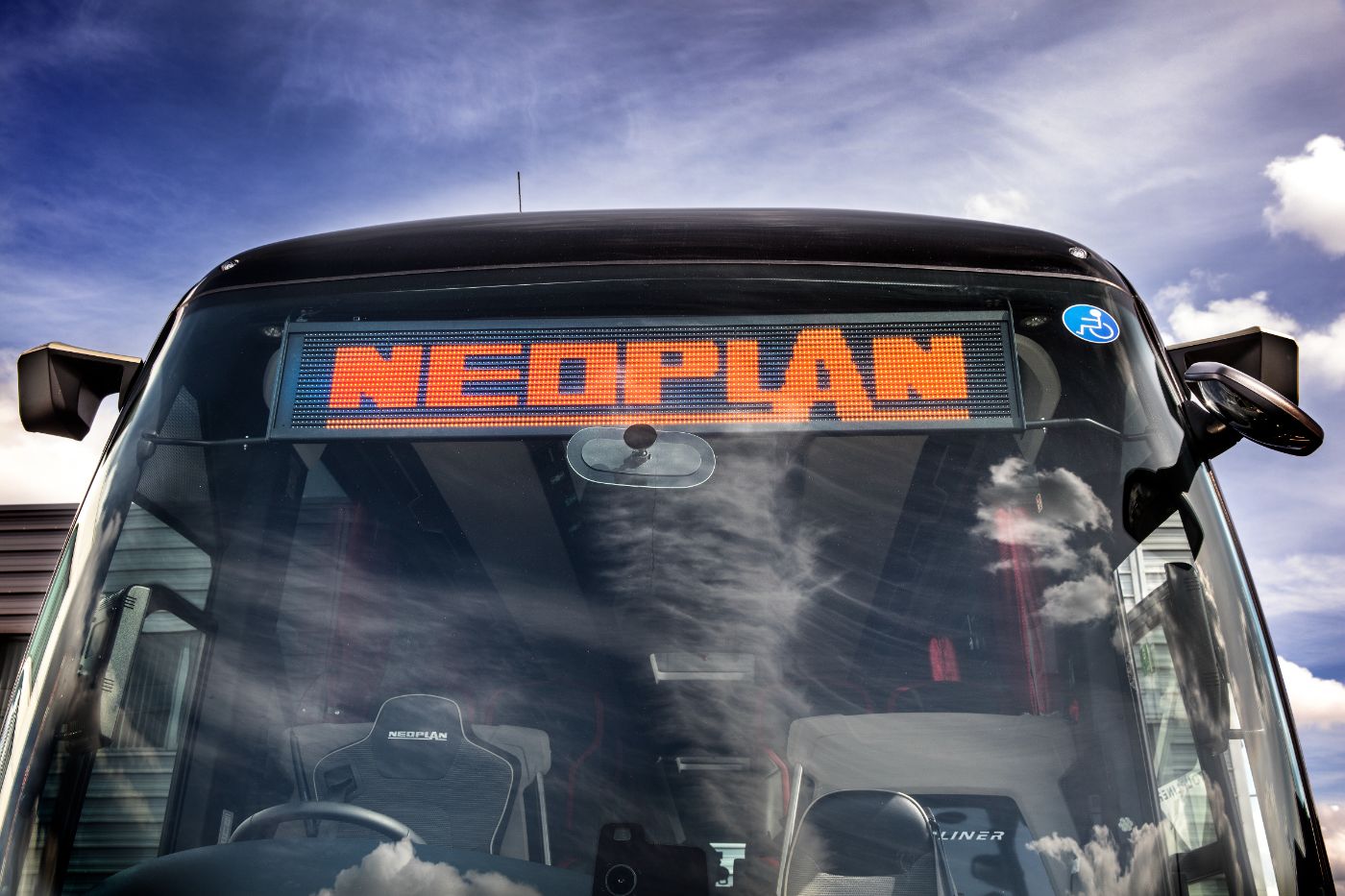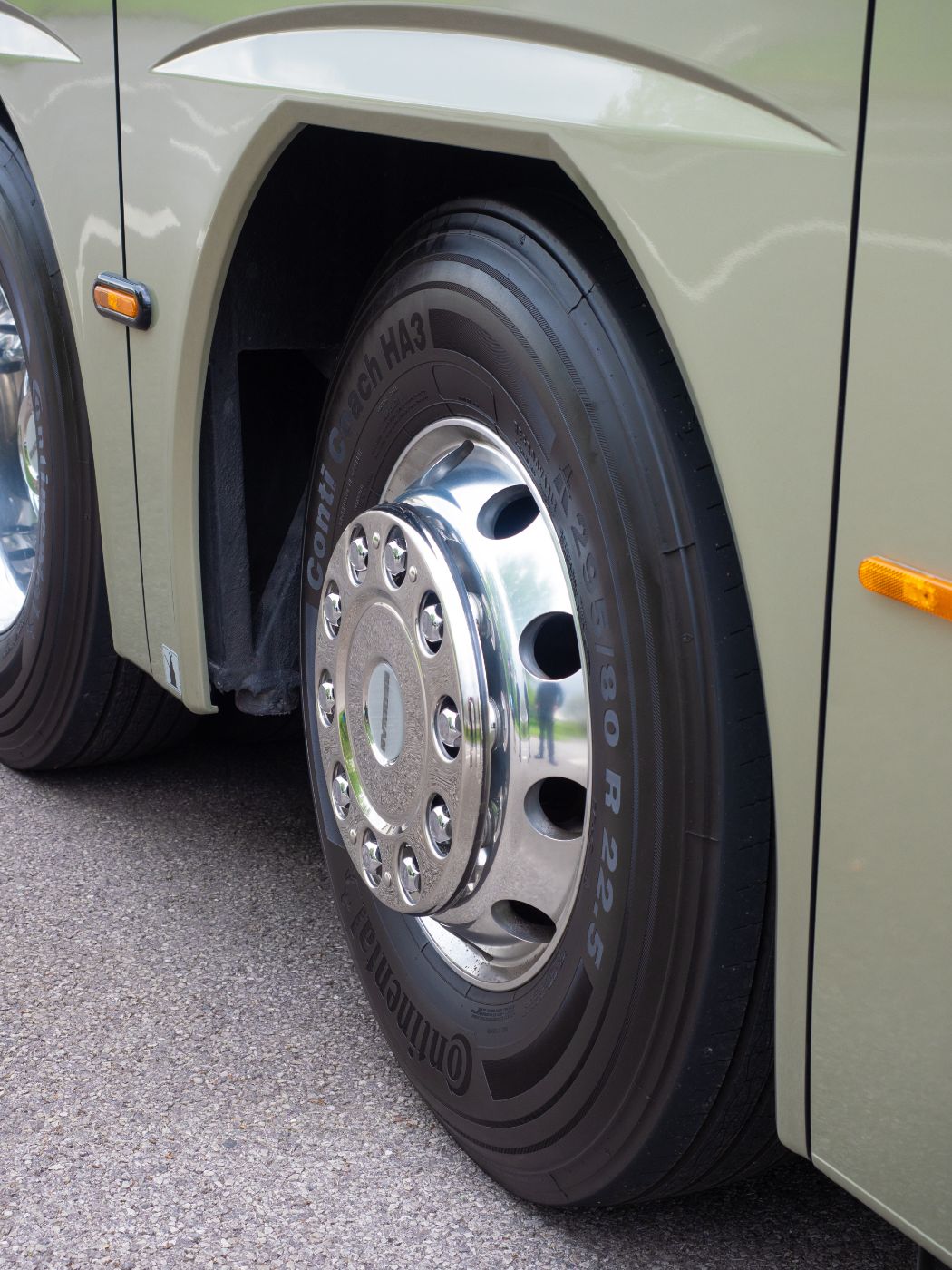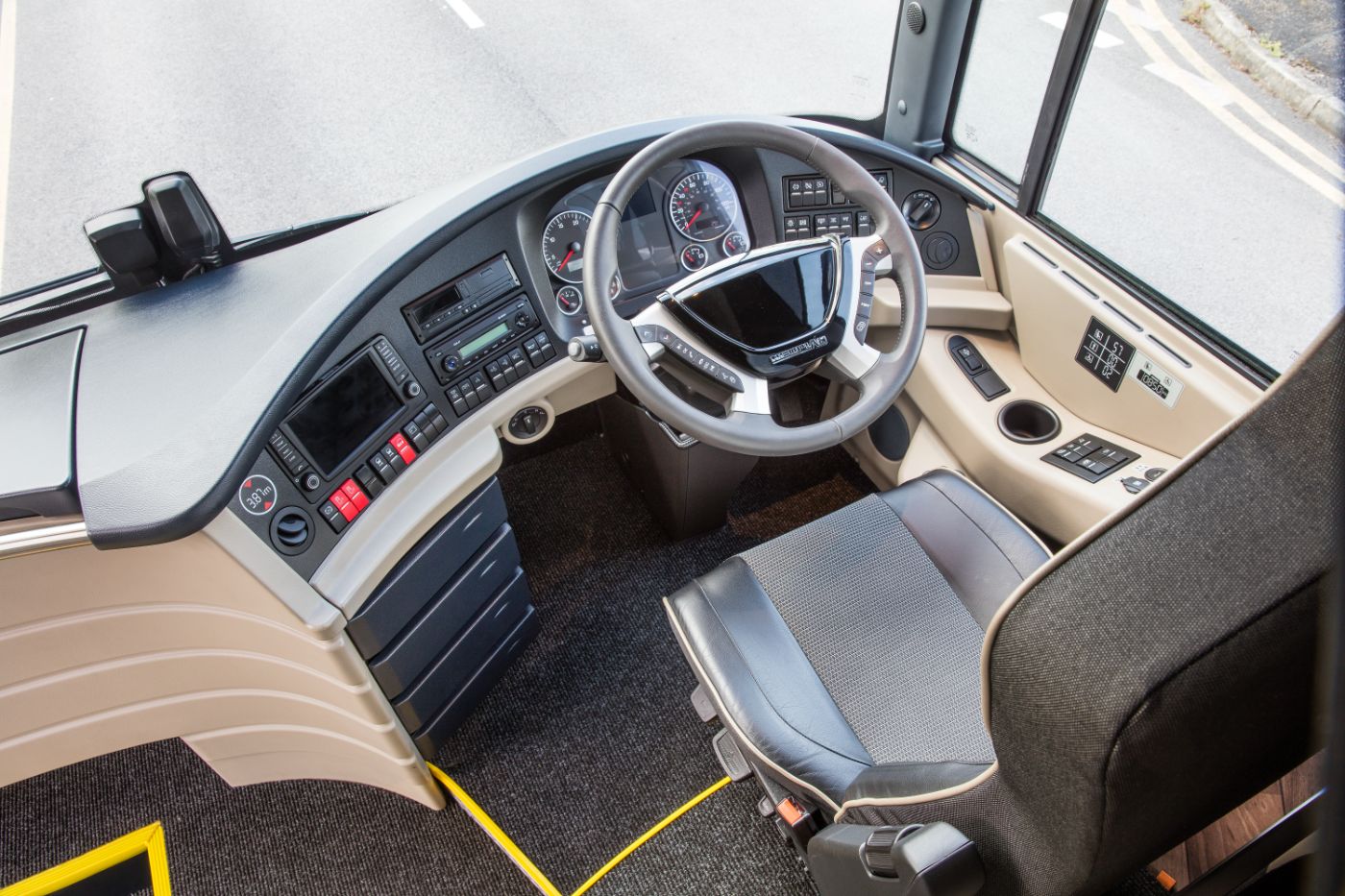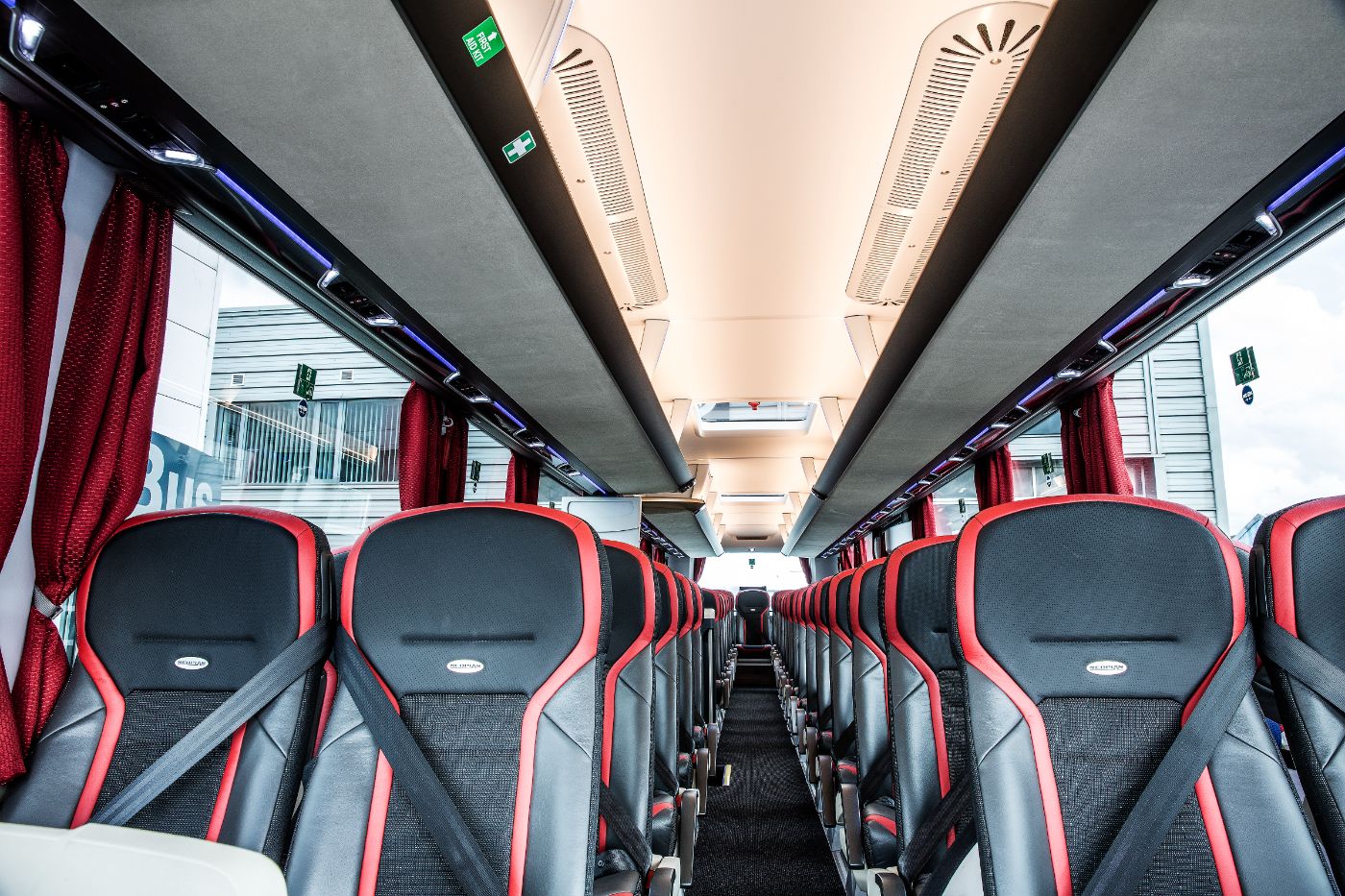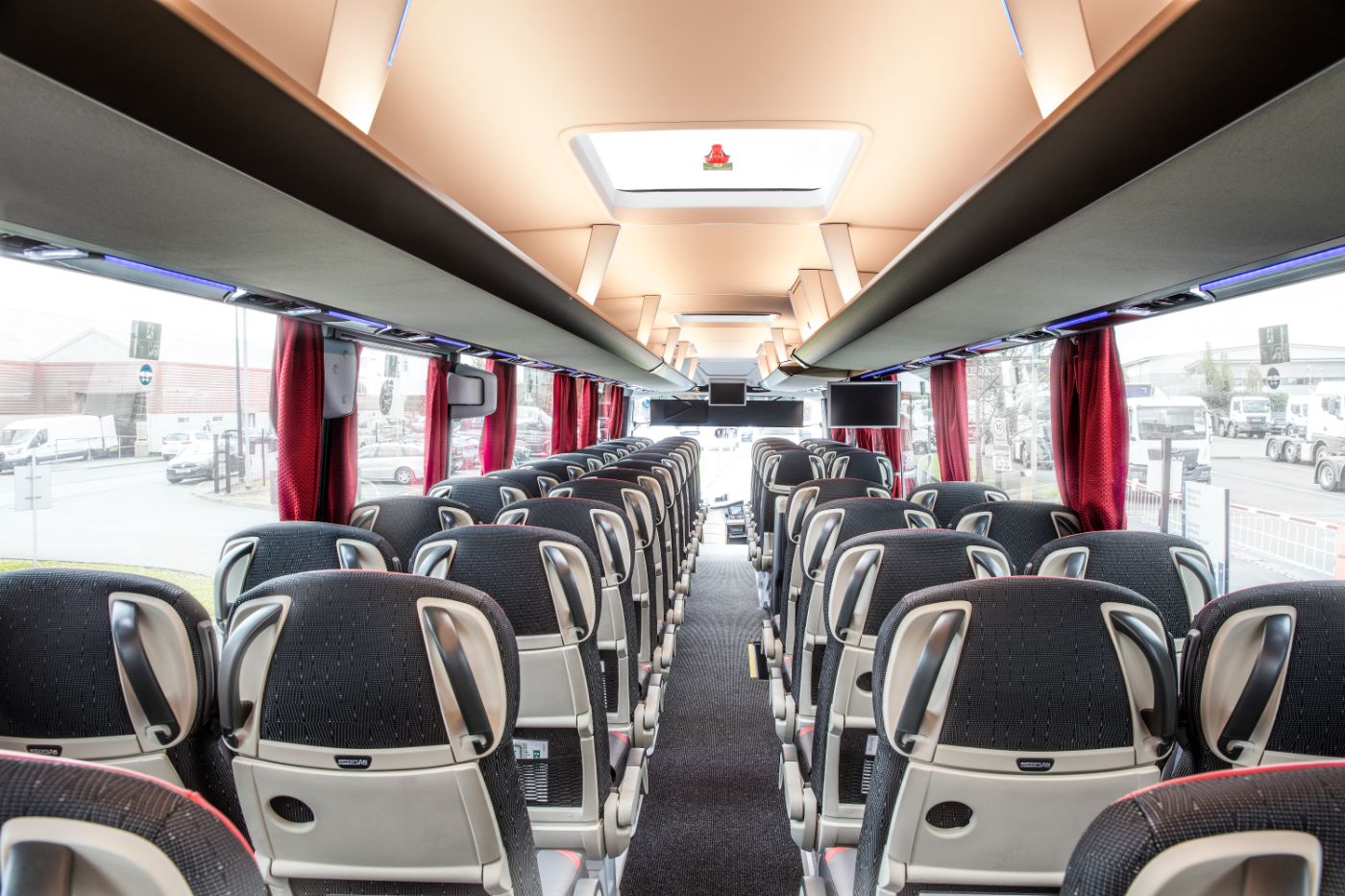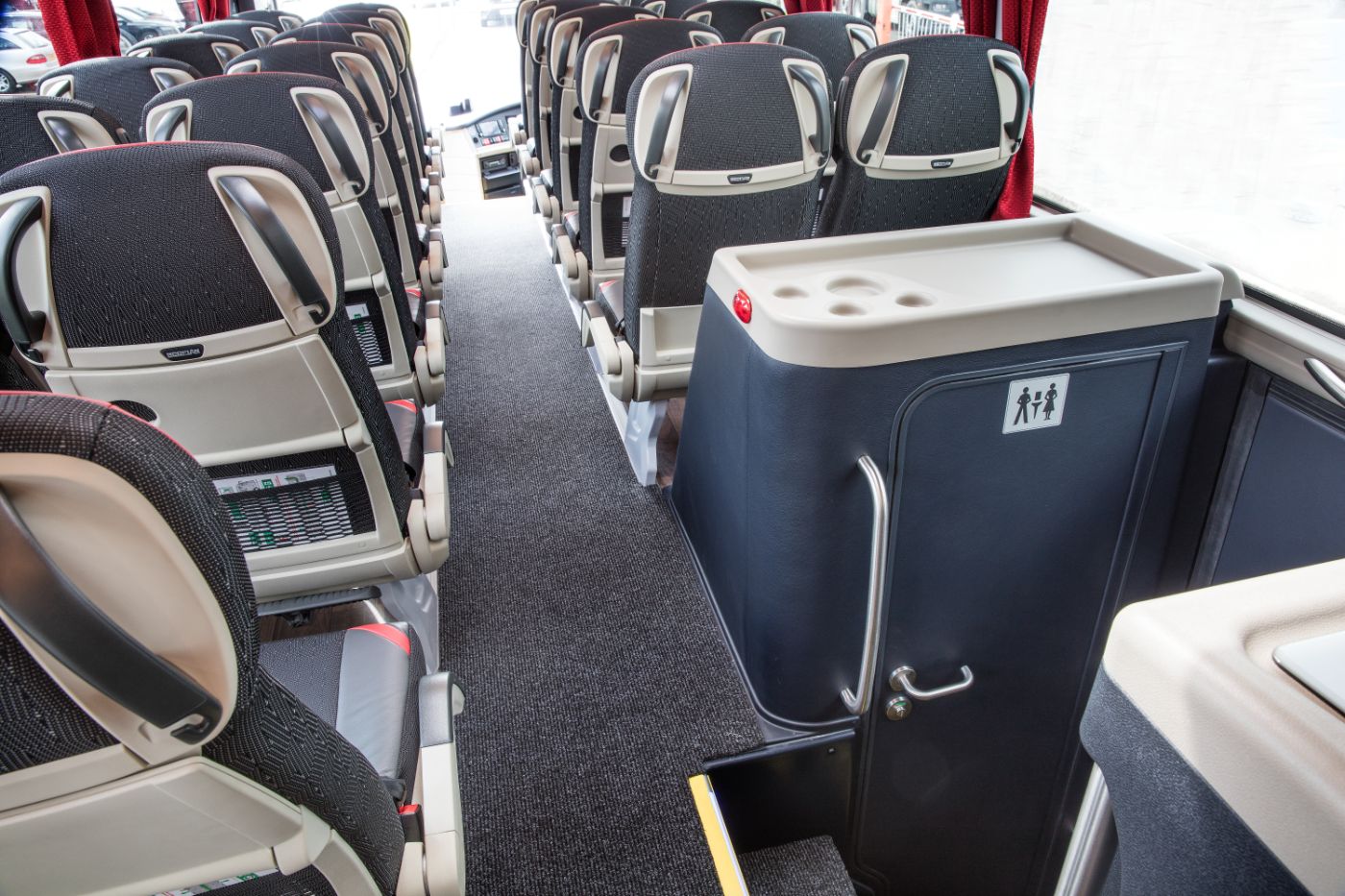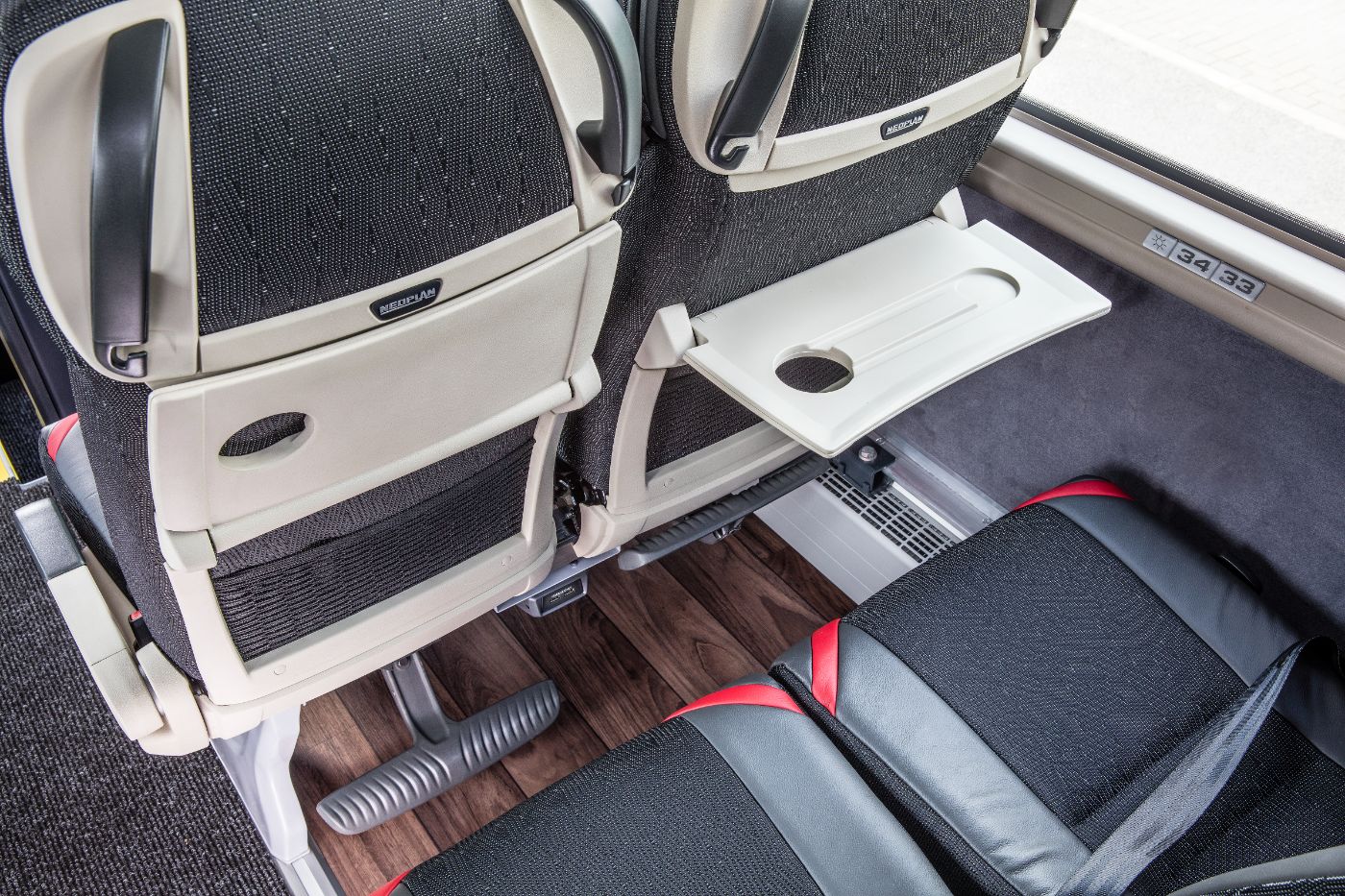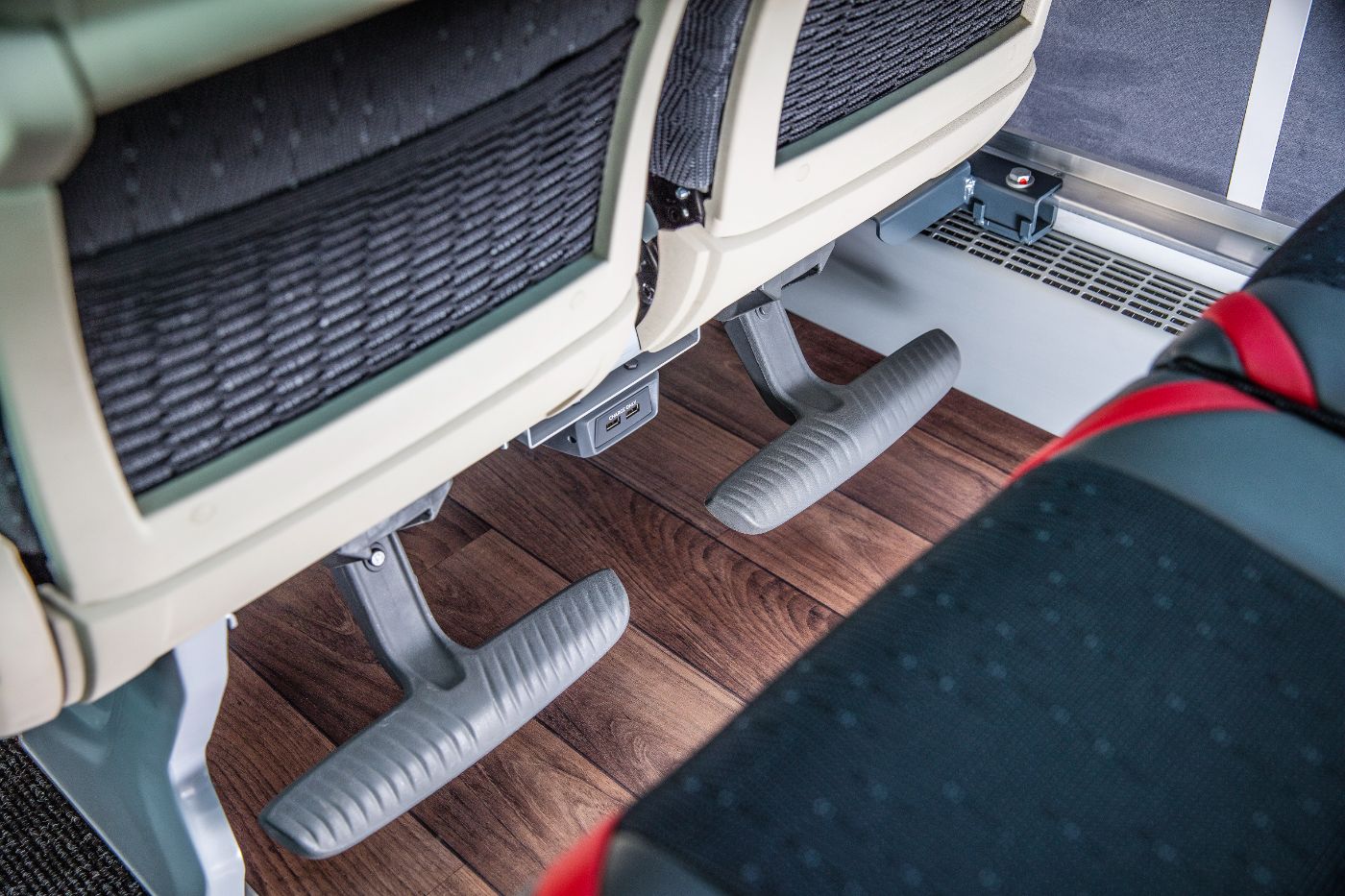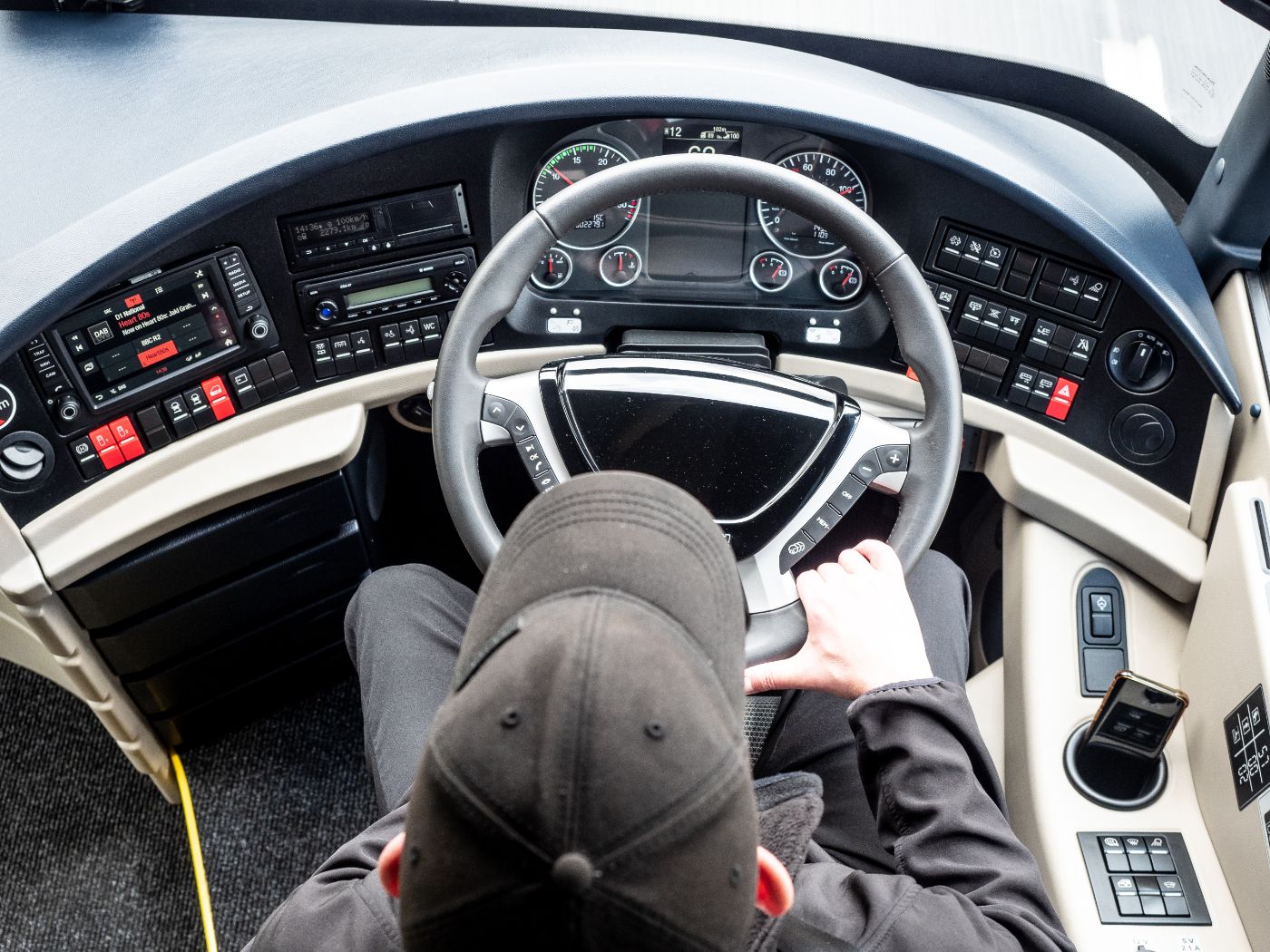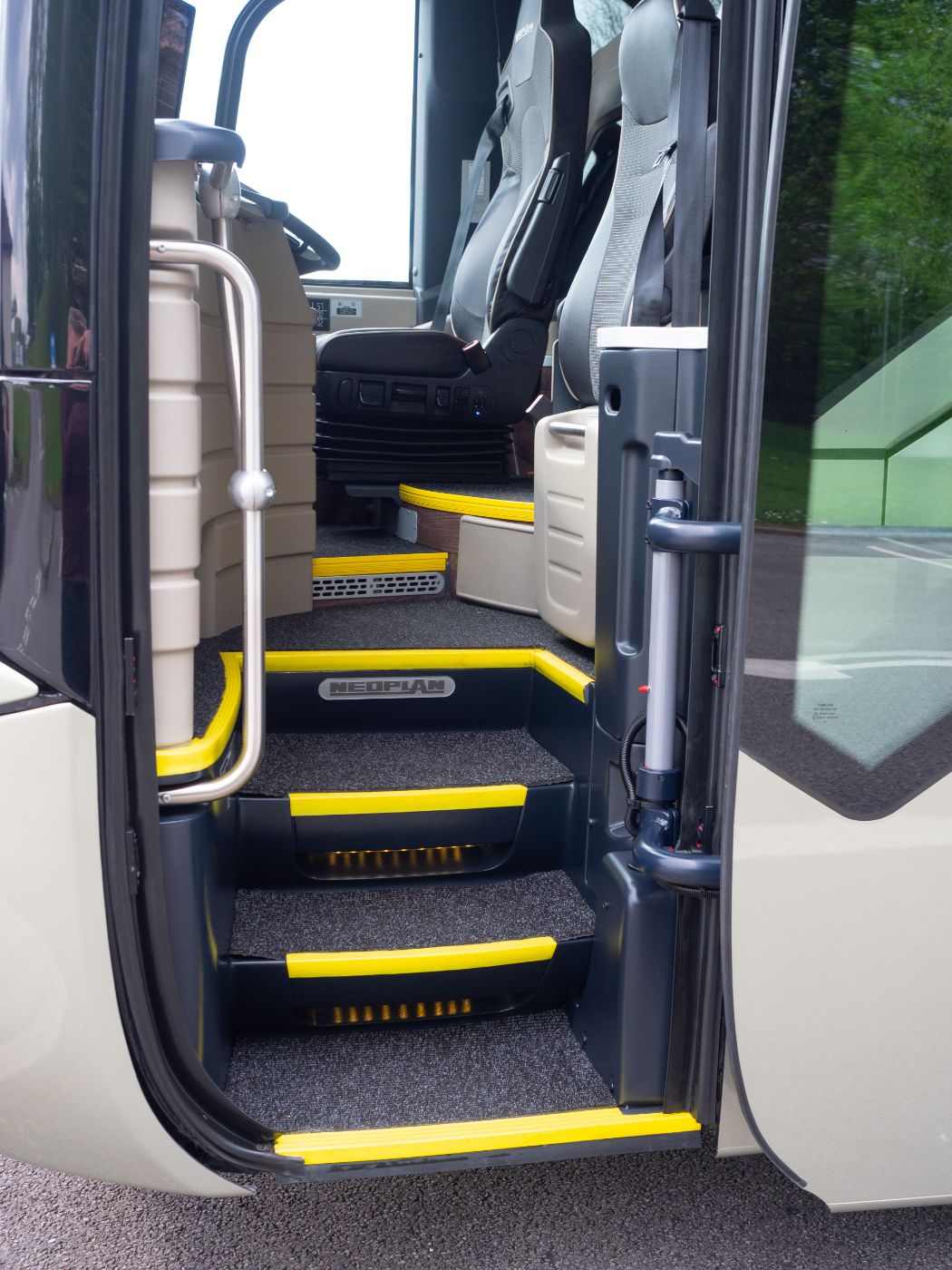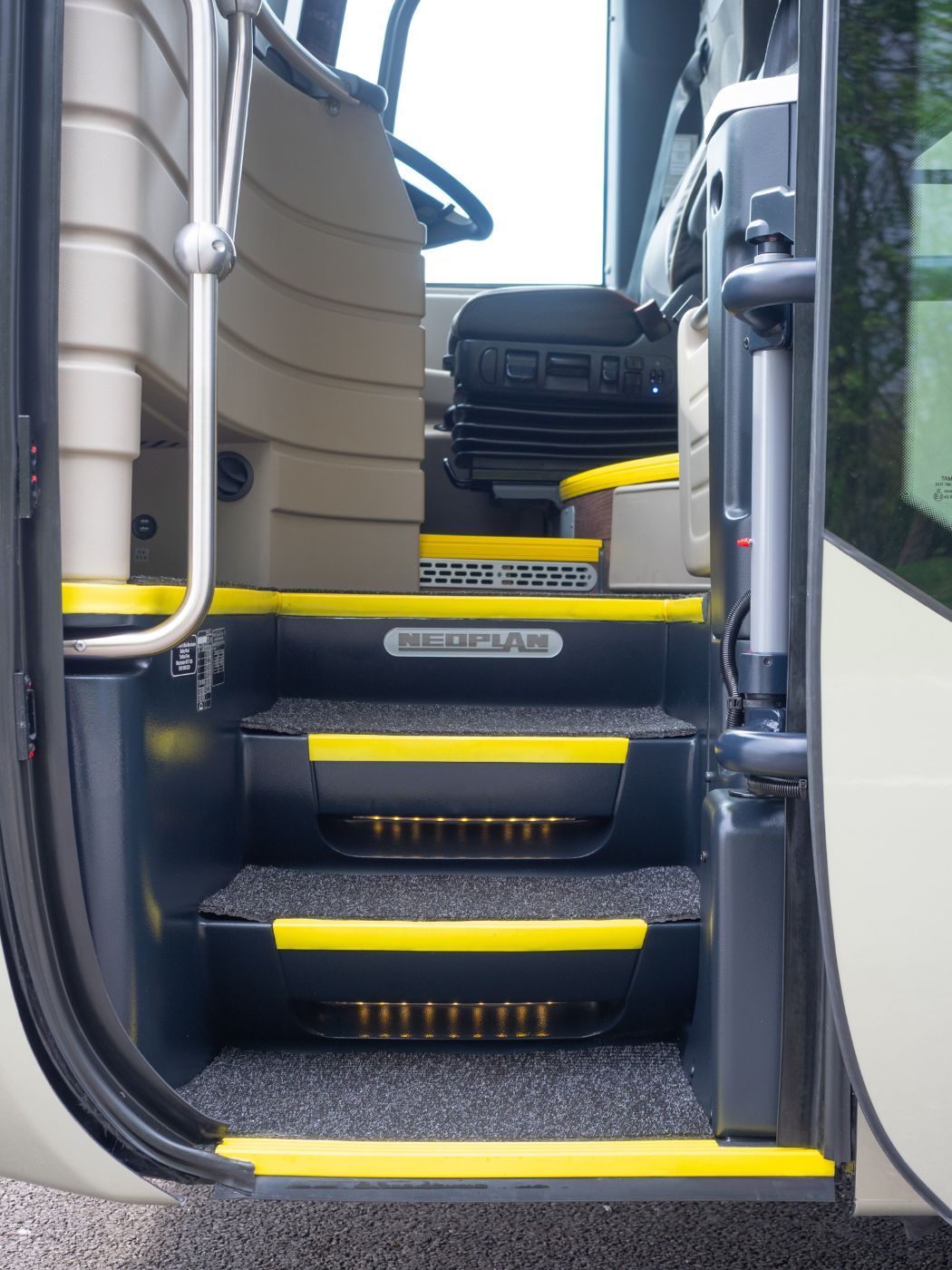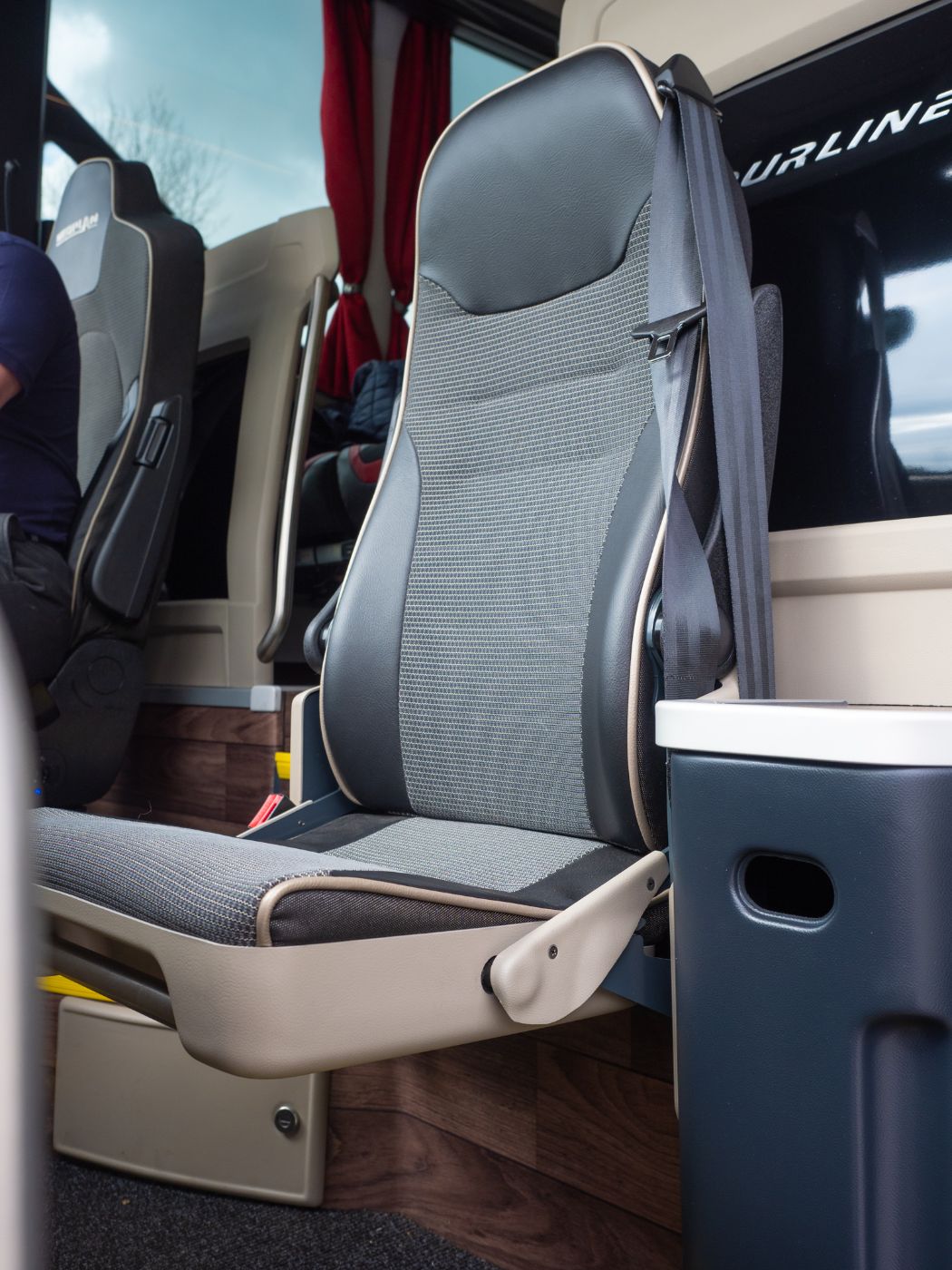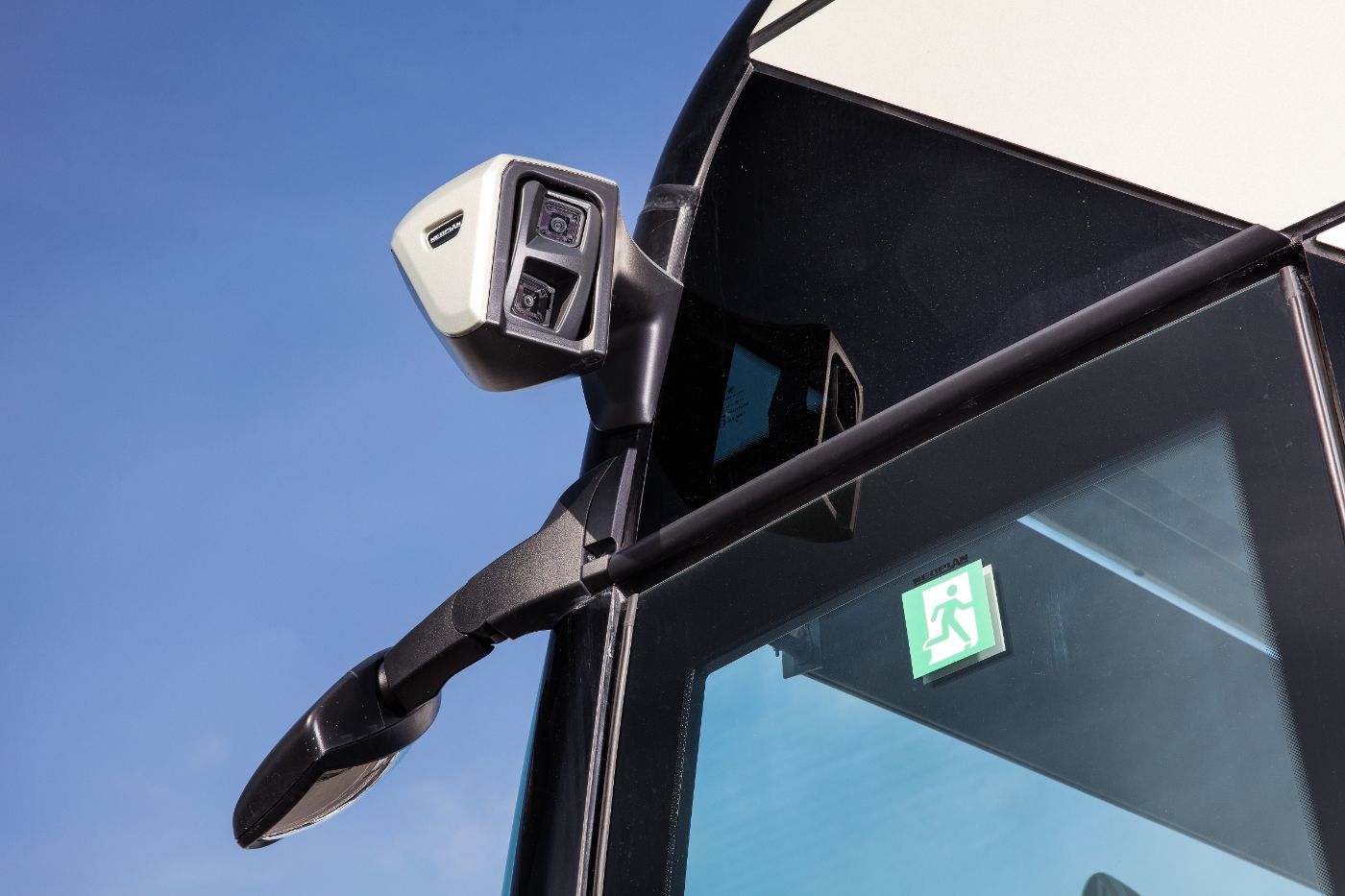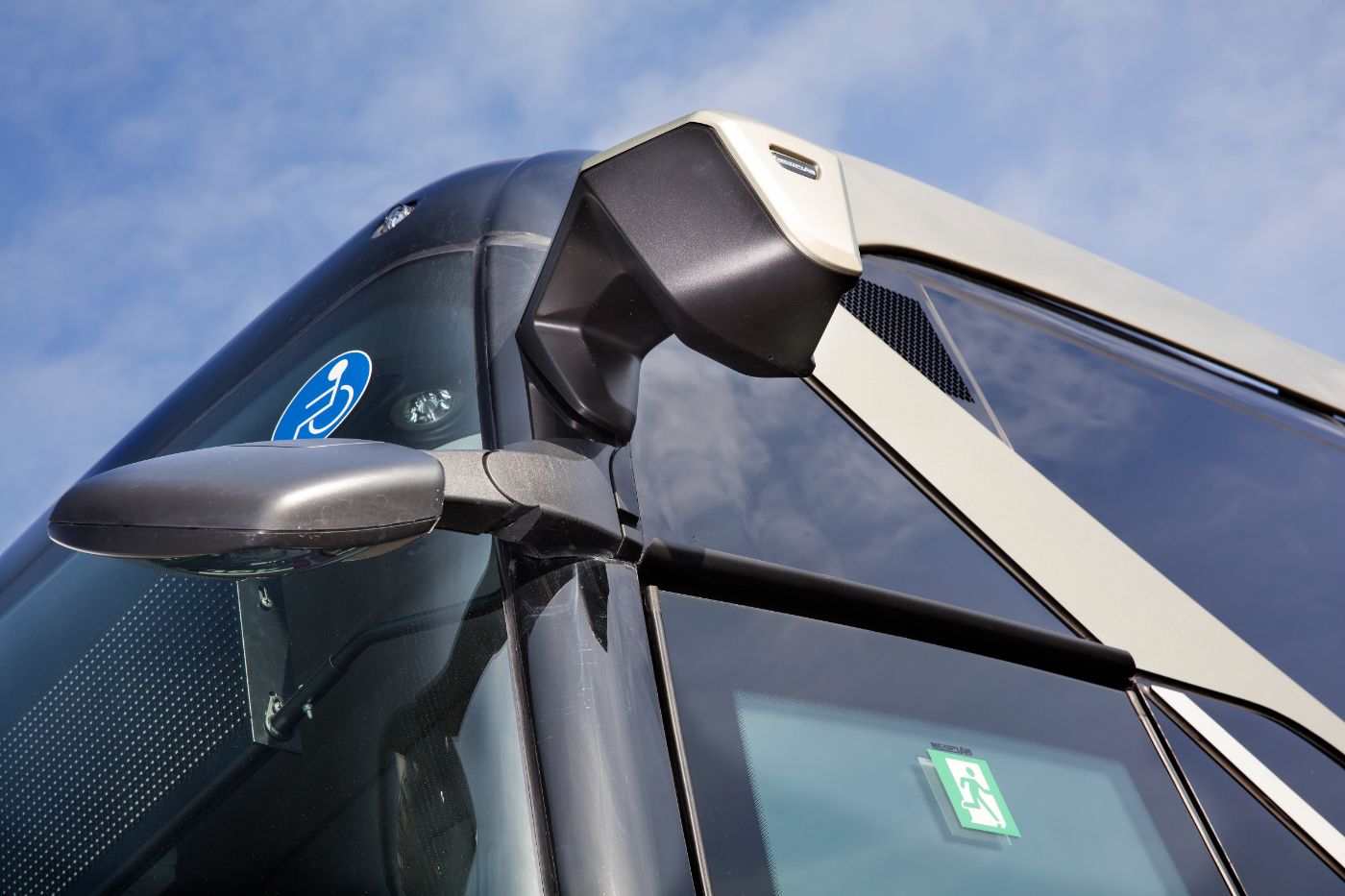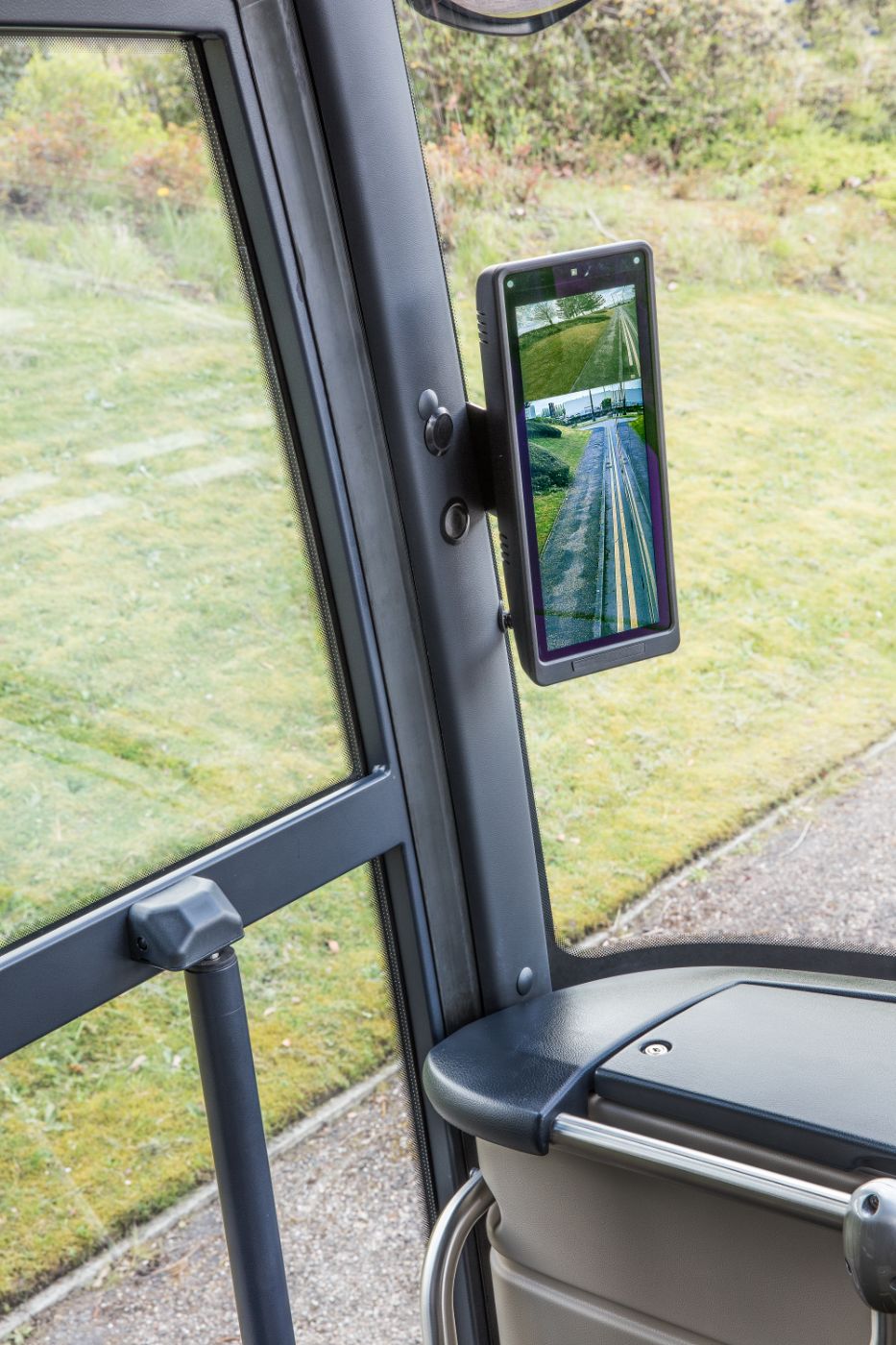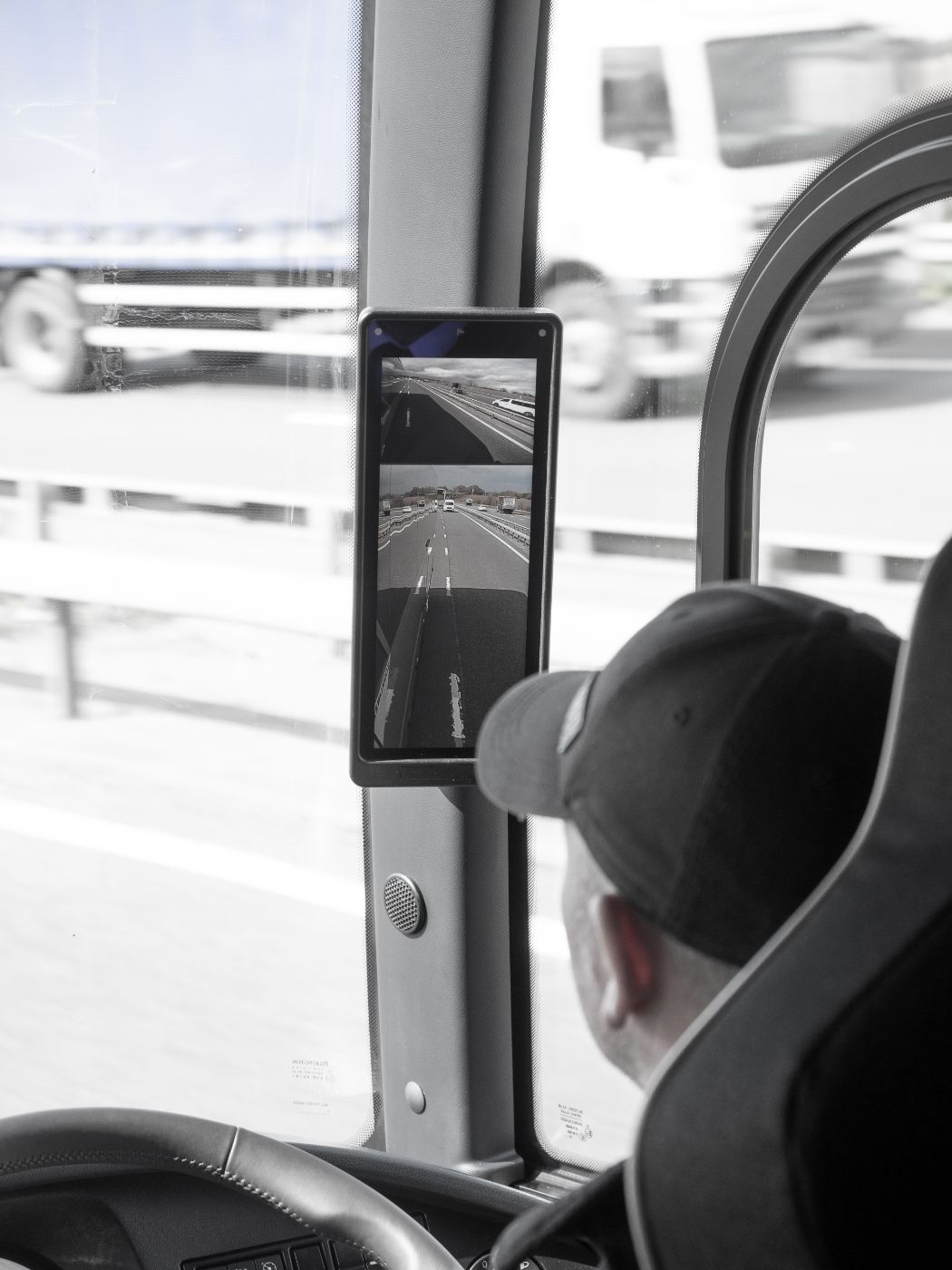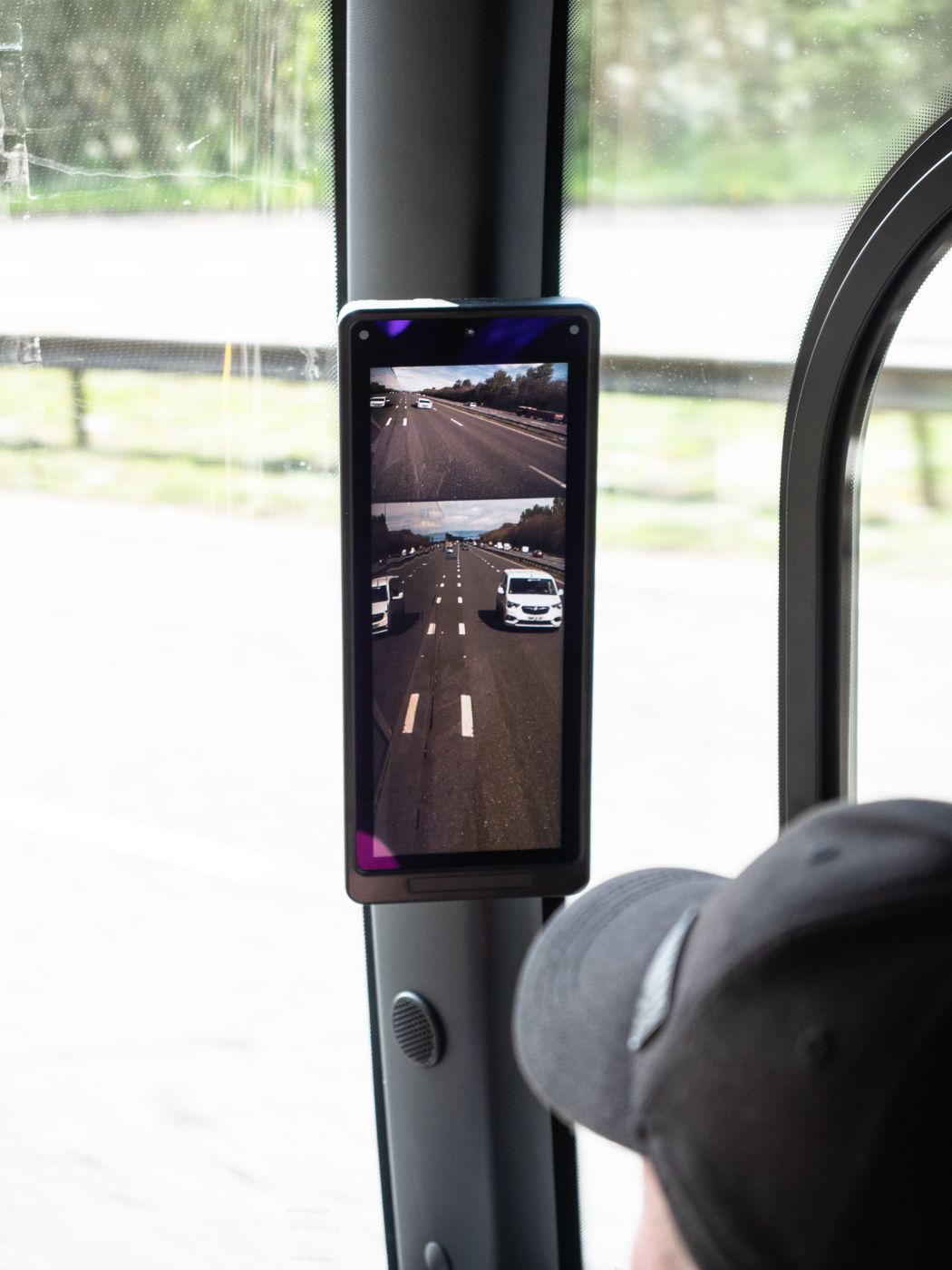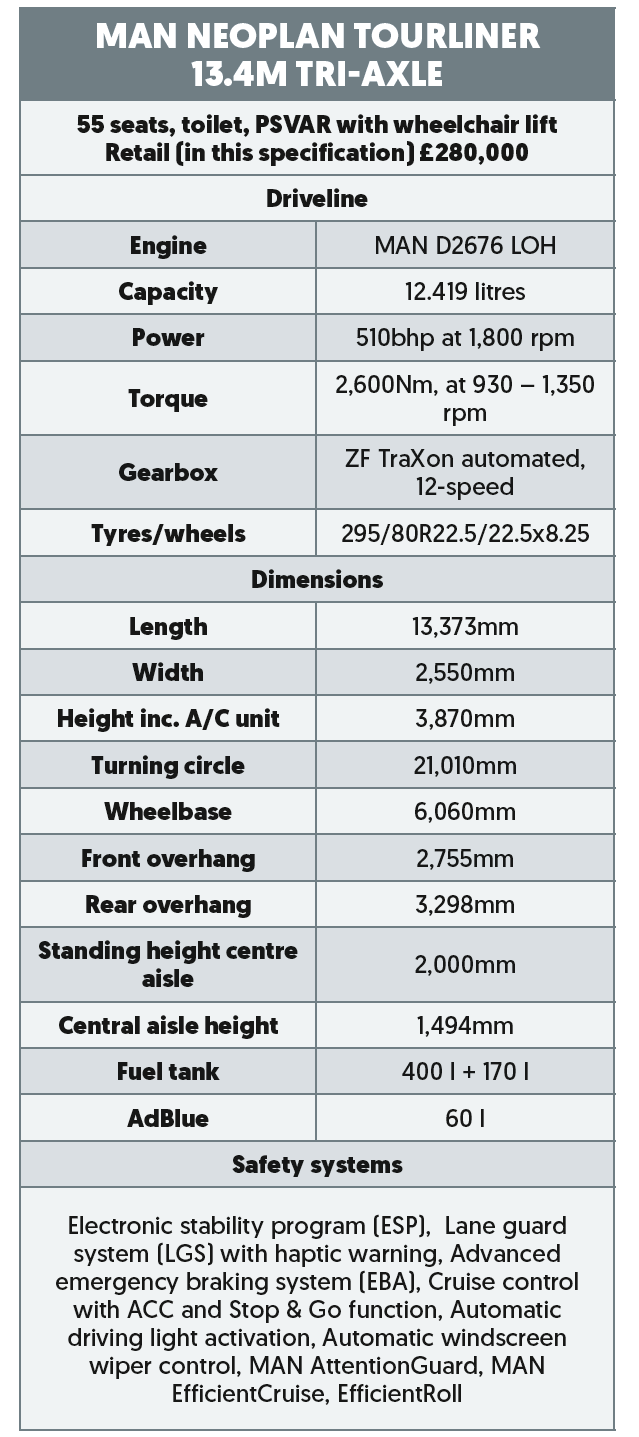ROAD TEST: Who’s the fairest?
Neoplan’s Tourliner is always classy, and this 510bhp tri-axle version is no exception. What sets it apart are the mirrors. It hasn’t got any
The last time we had a Tourliner on road test was March 2020 – just a fortnight before the world shut down and all the praise we heaped upon it seemed wasted.
We’d like to think, as a magazine, that our road tests will prompt a few readers to consider the merits of each vehicle and perhaps mentally pencil in an opportunity to see the coach or bus in the metal. I won’t forget the test day in a hurry – Storm Jorge was in full swing, battering the North West and the 12.1-metre two-axle coach as we tramped the M60.
The feature appeared on 13 March. We all know what happened ten days later. Suddenly, the entire industry shut down and any hopes MAN had of a flurry of sales from the publicity were gone with the wind.
Here we are, just over two years later, and MAN has been busy. This time, we have something very interesting indeed to show you. To be honest, that 2020 road test showed off a vehicle which had enjoyed some useful but non-momentous tweaks. The 13.4-metre P20 tri-axle you are going to read about goes quite a leap forward.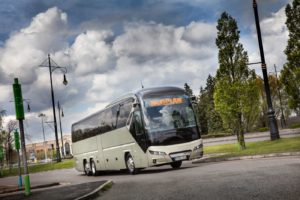
Yes, it’s the familiar Tourliner formula, with the B-pillar ‘epsilon’ and the Plain Jane (but classy and timeless) styling. Take a long look at the main photo. See any obvious differences? Yes, this is a coach without mirrors.
The introduction of video mirrors has, to me, seemed long overdue. I have been around long enough to remember the transition from steel mirror stalks to the vast, shrouded mirrors which hang forward like Gromit’s ears. They were a great improvement, but at a cost. They get whacked, frequently, and not only tip in at £600+ each, but then there’s the added downtime from making the coach undriveable, safely, until repaired.
The advantages of an external camera providing the view are many. First of all, the camera doesn’t protrude far and it is extremely unlikely to get clouted. Secondly, it can provide a better view than a mirror. It’s not me saying that; I’ve heard this from bus drivers using them, who say that the electronics can eliminate glare and can amplify gloom.
Matt Jacob, Senior Sales Executive at MAN, says that they’ve had versions of them under assessment for some time, but held fire in fitting them to a coach because, as is the way with electronics, they could see much better tech coming down the line. They are now of a quality that Neoplan can fit them with confidence.
But this isn’t a feature about electronic mirrors. This is a feature about a 55-seat tri-axle touring coach built to full PSVAR specification, and we think you need to give it serious consideration if you are looking for a quality coach.
Exterior
The Tourliner is a distinctive and well-established coach, with styling cues which have lasted through several incarnations.
I’m always conscious that ‘good looks’ are entirely subjective, and what I may see as workaday styling could be making someone else swoon. The fact that I found someone prepared to marry me proves this point!
Tourliners are certainly instantly recognisable, with the ‘Ʃ’ [epsilon] character of the B pillar carrying up to the roofline, the black plenum which visually extends the screen downswards and the strake formed by the top of the locker doors. There is fussiness here, such as the contoured engine louvres and the ‘eyebrow’ strake on the wheelarches.
But overall the styling is neatly subdued and all the better for it. A Tourliner will not prematurely age in the way that extremes do; think how long ‘loon’ jeans and platform shoes lasted, if you are as old as me.
A tour from the passenger door backwards reveals that the fuel filler is on the nearside, two locker doors between the axles then, of course, the big wheelchair lift door over the rear axles. At the rear, the rhomboid rear glass drops to twin louvres above the engine cover, with a shut gap to the rear light clusters which echoes the shape of the rear screen. There’s ample locker space for most touring use.
The offside is less cluttered, but for the continental door. The AdBlue filler is at the rear. The front sports LED lighting clusters and the styling is clean, rounded while the lower corner panels around the foglamps have some detail in the mouldings.
PSVAR
It’s understandable that meeting uniquely British PSVAR regulation with a German-designed, Turkish-built touring coach is going to involve some compromise.
The quality of the wheelchair lift access door is first-class, with absolutely no evidence of additional noise or any rattle at any point. But you can’t get away from the fact that it is one very large, additional door. Opened, it reveals the lift, mounted just above the rear axles, and deployed with a wired remote, as they all are. It’s as well accomplished as any.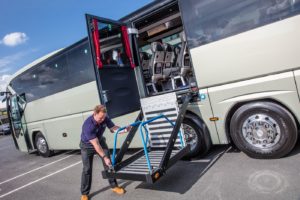
The seats are on tracking which extends long enough to provide two wheelchair spaces when four pairs of seats are removed. Operators can specify the coach without the lift itself and destination screens if they are expecting to run this coach as a pure tourer in its first life, at a saving of around £6,500.
The destination screens are from Mobitec and are bright and clear. They are pre-programmed on a computer and transferred to the coach on a USB stick, Matt said. The front board is mounted at the top of the windscreen, and disguised by dropping the sunblind a little, the nearside board mounted on the glazing at two rows of seats.
Although the board is slim and not too high, I did think it might obscure the view for short passengers in those two rows of seats. A necessary evil, you might say, to meet PSVAR, but I cannot be alone in being mystified that manufacturers have not yet produced a board which can be mounted on the panelwork or, better still, devise a board which can be demounted when not needed. I am probably missing something. Please tell me what it is.
Interior
The passenger entrance is excellent, up four easy steps to the driver and two further steps on to the aisle.
On the right, the folded courier seat is not intrusive. The courier has a microphone and map light, and a foot recess under the dash which also has two USB sockets in it. There’s a nice bin here, too. The decency screen is colour-coded to the seat framing in off-white and proudly displaying the Neoplan logo. Indeed, Neoplan has missed no opportunity to mention Neoplan or Tourliner in this coach.
On the left of the entrance is the lidded 48-litre dash fridge, and beneath a second lid, access to the ‘master’ USB feed to the audio/video system. It’s Bosch, of course, and has two screens, the second a fixed unit over the toilet.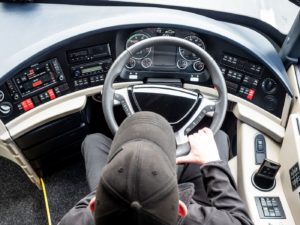
The driver has an Isri suspended seat – the test vehicle’s having fan cooling as well as heating – and a very nicely designed dash, which our test driver figured out within minutes. There is ample storage space in the driver area, a coat hook and even an umbrella.
This is a flat-floored coach, and the example we tested has wood-effect vinyl and an aisle carpet. The 55 seats are Kiel Avance X and are excellent. On the test coach, they were flat-weave flecked charcoal fabric with leather bolsters and headrests, with red inlays. The seats have recline and side-shift into the aisle. They have seatback tables and footrests, and the corner grab handles have bag/coat hooks built into them. Between each seat pair at low level there are two USB sockets. This is a very nice, comfortable seat though other seats area available, of course. And yes, it says Neoplan on the seats, too. Back and front.
Overhead racks are deep enough to be practical, There are two lockers installed in the racks, one behind the driver, the other near the toilet. Along their length they have service units with reading light and ventilation controls.
The centre stairwell is nicely designed, with ample width and sensible step heights, and of course leads to the toilet, which is typical of such units, The toilet can be locked from the dashboard. It has the usual red ‘in use’ light mounted adjacent to the aisle. To the right of the stairwell is a 40-cup coffee machine.
It’s a really lovely interior. I spotted three pairs of seats with partial pillar intrusion, and I have already mentioned the destination board at the front. But as a travelling environment, this Tourliner is certain to appeal.
On the road
If you are among those operators who believe a more powerful engine will have an easier life, you’ve come to the right place with this example.
The D26 12.4-litre MAN engine common throughout the Tourliner coach range is in a nifty, 510bhp state of tune, and propels itself with urgency through the 12-speeds of the ZF TraXon automated gearbox. This really is a driver’s machine, with a whole raft of extras.
The test driver this time is an experienced coach driver who has driven many marques of modern coaches. Nonetheless, he had not driven a modern Neoplan much less a coach with electronic mirrors. We felt this a good test of the ergonomics of the vehicle, in a near-real-life situation.
The driver spent the first ten minutes acquainting himself with the layout of the instruments and switch clusters but said that, overall, everything was where he expected to find it, and clearly marked for its function. On the test example of the coach, the handbrake lever is very close to the driver seat – too close, he felt but said it was no problem. Matt Jacob says, going forward, MAN is looking at installing an electronic parking brake.
Immediately, of course, the driver wanted to acquaint himself with the electronic mirrors. The view in the offside mirror is in two parts. At the tope, a wide-angle lens shows the area alongside the coach, eliminating any blind spot very effectively. Below this ‘landscape’ image is a portrait image mimicking the conventional mirror. He said it is very clear and in the perfect position nal mirror, albeit inside the vehicle.
In past road tests of some vehicles, we have seen mirrors which would be partially obscured by the A piller for certain tall or short drivers, and mirrors outside of the swept area of the screen, so they would become more difficult to use in rain, drizzle or, worse, snow. The Optiview electronic mirror avoids all of these pitfalls.
Gear selection is via a rotating knob within easy reach of the left hand. The driver praised the Isri seat, which provided a full range of adjustment. The dashboard is shallow, front to back, placing the driver close to the screen and giving a good judgement of the front of the coach. This is aided on the offside, when boarding or alighting is going on, by the low level of glazing on the passenger door and by an additional mirror mounted on the A pillar.
The main instrument binnacle was in full view through the steering wheel – remarkably not true of all coaches – and the fact that the coach has a fully heated screen and driver window was seen as a real positive by the test driver.
Pulling away was effortless, as you would expect from such a powerful engine. Gearshifts were perceptible only in the lower four gears, after which the gearbox upshifts were only really discernible on the tachometer. At normal acceleration, the driveline combination seemed to favour upshifts at something approaching 1,300rpm and cruised at a little over 1,000rpm, utilising the impressive torque to conquer all gradients with ease.
Kickdown was something the driver had to really try hard to find, and delivered its boost gently but positively. It would very rarely be called upon in normal circumstances. The driver said the steering was positive, with good ‘feel’ and the coach held its line well at motorway speeds, with little correction required.
The ride was excellent. This is a heavy coach, and a tri-axle to boot, so I did expect it to handle well. It didn’t pitch over undulation and even over some frankly awful, truck-battered surfaces reacted with just a low rumbling. The engine note could not be heard over 30mph except in the rear rows of seats, and the tiny amount of transmission whine there was would be drowned out by someone opening a crisp packet. It is, of course, only a guess how it might perform fully laden but the powerful engine we felt would barely notice the extra weight.
It was only in the latter stage of the test drive that I thought to ask again about the OptiView mirrors. The test driver admitted he had become used to them almost immediately. He accepted that not all of his colleagues would approve; he said the same when using the Adaptive Cruise Control.
The ACC system is complemented by a similar low-speed mode for cruising in slow, stop-start traffic, which automatically matches the coach speed to the traffic, even cutting the engine at a standstill and restarting. We had no opportunity to test this – we had rarely seen the M60 so quiet – but the ACC worked perfectly.
In a later conversation with a coach operator, I was told that there may need to be a change in driver training. He said that his coaches with these systems can be remotely monitored, and he had discovered that barely half of drivers used them. He feels that, although many coach safety systems are passive, they should still be the subject of much more training, as ACC can be very effective at combating fatigue.
The Tourliner also has a lane departure warning, with visual, audible and haptic reaction to crossing white lines without using the indicator. It has AEBS, of course, and the usual suite of mandatory safety controls.
The coach also has MAN Attention Guard, which uses the LSG camera and inputs from the lane departure warning to assess whether a driver is tired. Obviously, our fresh driver on a two-hour run was never going to trigger this but had he been taking micro-sleeps, he would have had both a visual warning on the dash and an audible warning to take a break.
The coach can, like most modern coaches, be remotely monitored through telematics via MAN Fleet Management System. This information fed back can help identify the need for driver training and monitor the vehicle’s performance. This is outside of the scope of this road test, but you can find full details on the MAN website.
Our lengthy test route chiefly on A roads and motorway reached a conclusion back at MAN Truck & Bus at Trafford Park. The test driver, by now using the video mirrors instinctively together with the reversing camera backed into a tight spot to park. As the front swung round (and with active rear-steer, the coach was highly manoeuvrable) I saw a stop sign pass the windscreen. Had the coach had mirrors, it wouldn’t have made the turn or would have lost one.
As a brand-new coach with a new driver, and some deliberately testing driving, we didn’t expect outstanding fuel consumption, though the on-board computer suggested heading for 11mpg. Before we had set out, the delivery drivers had seemed to have achieved 13mpg+
Verdict
The Tourliner continues to deliver a very attractive package which appears to have been built up to a standard, not down to a price.
In this test example, with its 510bhp engine and high specification, we saw how the P20 can perform. We also saw how MAN has expertly coped with the demands of PSVAR and delivered a coach which could work perfectly well as a tourer but be ready for rail replacement, too. The addition of the wheelchair lift gave it a ULW of a gnat’s over 15 tonnes.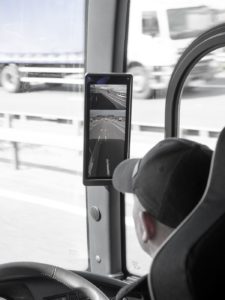
With such a plethora of great features, I’m in danger of fixating on the OptiView electronic mirrors, but this is the first time I have seen them in action on a coach. They are impressive. A coach operator afterwards asked what would happen if they failed; well, Neoplan equips the coach with left and right-hand emergency ‘real’ mirrors, and is stocking spare modules as you read this.
I do feel I should make the point that modern, solid-state electronics are generally reliable, and also that traditional touring coach mirrors can be £600+ each. OptiView is under £3,000 as an option. And it works better in rain, snow, glare, sunsets and at night than most mirrors. I think the electronic mirror’s time has come.
Our test driver
Our Coach Stig this time is an experienced coach driver who confessed to loving a gadget, so the tricks the Tourliner had up its sleeve were of appeal. Bus and Coach Buyer uses a variety of experienced drivers on its road tests to avoid any brand allegiance.
